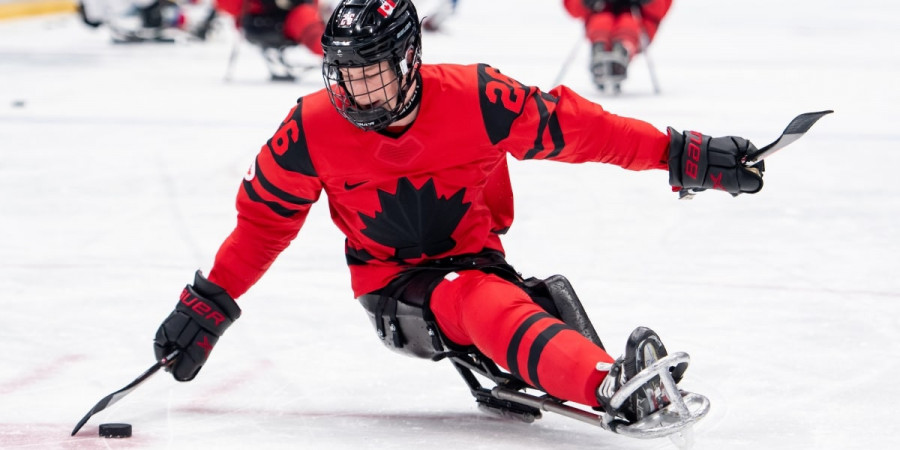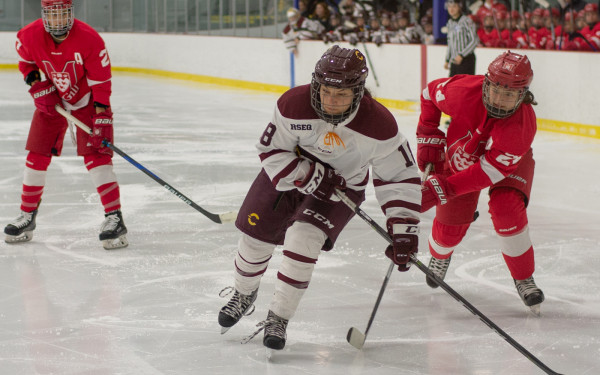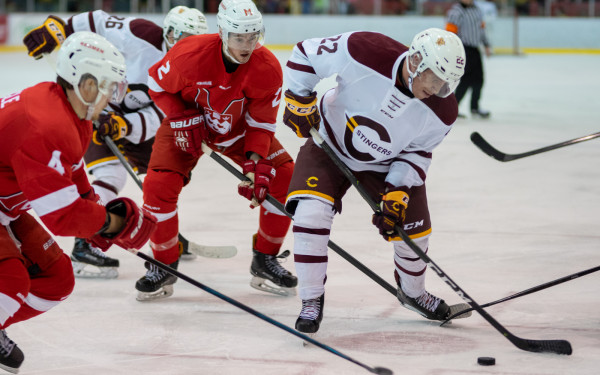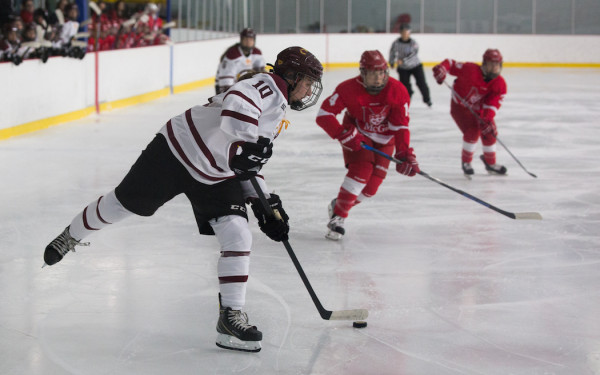Conversation With a Paralympian
Paralympic Silver Medalist Discusses Training and Accessibility
On Oct. 25, The Link sat down with Concordia student and Paralympic silver medalist Anton Jacobs-Webb to ask him a few questions on sledge hockey and on accessibility within sports. Jacobs-Webb, who was born with one leg shorter than the other, began playing sledge hockey at the age of 11.
Answers have been edited for clarity
Q: When did you first have your eyes set on the Olympics or international hockey competition?
A: I actually started playing sledge hockey when I was 11. When I first got introduced to it, I met a person who was on [the Canadian] national team, one of the players who went to the Paralympics, so he introduced me to the sport. I knew I wanted to be on the national team and I wanted to go to the Paralympics right from when I first met the player, Jean Labonté. He's from the Ottawa/Gatineau area.
Q: How do you train for sledge hockey?
A: I would say it's a little bit different in the gym, just because we use our arms and our back so much. It's a lot of upper body work—forearms because we're shooting a lot. On ice, the movement is different, but outside of the drills, the tactical part of the game is really similar. I think it's just that sometimes, you have to work on angles because we can't skate backwards. [...] Our defensive approach is a bit different.
We don't use our legs as much at all. But we do use our hips in a certain way. I still do deadlifts and that kind of [exercises]. I don't really do squats all that much, but [I do] lower back strengthening, hips, [and] core [to better] control [the] sled. And then it's a lot of back and shoulder [exercises]. And just all upper body; a lot of forearms for shooting.
Q: What is a misconception about sledge hockey or something you wish people knew about it?
A: I don't think there are any. I think often, people ask if the rules are the same—all the rules are the same in sledge hockey. The only difference would be that you can't run into somebody with your sled, [a] big metal sled can cause injuries. Otherwise, I think it's pretty straightforward.
Q: What is it like to juggle being a professional athlete and your studies at Concordia with the added difficulty of navigating institutions like Concordia, that are built for able-bodied individuals?
A: As for the campus, I don't personally have any challenges. I mean, stairs take a bit more energy for me. If I'm going to the Hall building, I usually just take the elevator. But I don't usually have a challenge in that way. Living in Montreal [requires] a lot of walking, but that's kind of what it is—I'm used to that. In general, for school and hockey, I think it's a lot of time management for me. This is my fifth year on the team, so I've gotten a bit used to it, but it was quite a challenge at the beginning. I have to communicate with my teachers a lot, so I touch bases with them at the beginning of the semester. I tell them when I'm going to be away, what exams I’m going to miss, that kind of stuff. But I mean, Concordia has been really nice to me. […] It’s been really easy so far.
Q: Concordia doesn't have any parasport team despite claiming to be working towards achieving what they call Equity, Diversity and Inclusion throughout the university. Why do you think that is?
A: I honestly don't personally know of any university that [has] para sport teams. I think the challenge is there [aren’t] as many athletes to fill the whole team, but I think they could provide some kind of support, like equal access to the facilities [and] a varsity if you have an elite parasport athlete. [Providing] them with the [same] support that the varsity athletes get could be an option.
Q: Do you find that there's a lack of disability representation in sports?
A: Parasports have come a long way and there's still a long way to go to get us to the same competitive level [as non-para hockey, since] we're [still] a little behind women's hockey. […] The more players you have competing at lower levels, the more competitive it gets, and the more fans and spectators that you get. I think we're just looking for players right now, similar[ly to] quite a few other sports that go into the Paralympics. There are quite a few sports where there aren't that many new players coming up, and that's a bit of a challenge right now.
Q: Is there anything else you'd like to talk about or elaborate on?
A: I [would like to] thank the War Amps of Canada. They’re a non-profit organization that helps me with my prosthetics [by] fund[ing them and] they've also helped fund my sled. [War Amps] do[es] a lot, so I usually get them a shout out.
This article originally appeared in Volume 43, Issue 6, published November 8, 2022.


_600_832_s.png)

4_600_375_90_s_c1.jpg)


